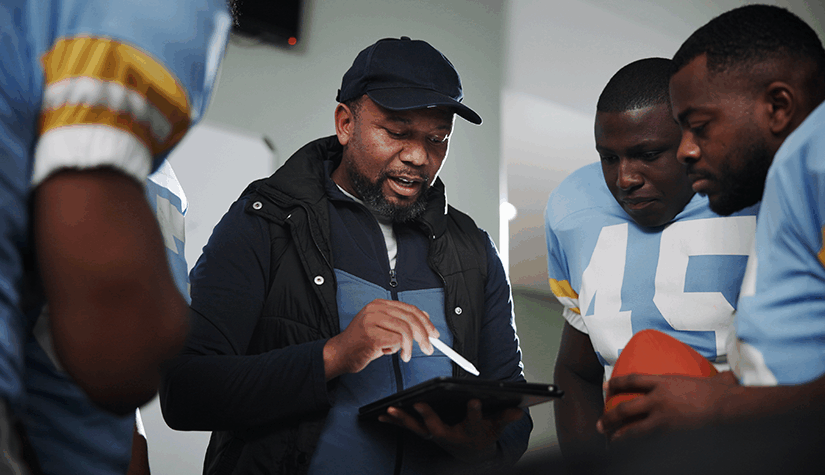How to Give an Impactful Athlete Evaluation
As a coach, each piece of feedback you provide an athlete, whether positive or negative, will give them a sense of clarity and purpose in their sport.
Often at the end of an event or season, coaches present this feedback in a comprehensive and formal athlete evaluation. The purpose of an evaluation is to motivate each athlete to continue improving by reinforcing positive performances and discussing areas of improvement. As we near the end of the winter sports season, it’s imperative that coaches know how to leverage the tools to effectively provide constructive feedback in an athlete evaluation.
Components of an Evaluation First, we must take a look at what goes into an evaluation. Athletes should be evaluated on their technical, tactical, and physical skills, which will vary depending on the sport. These include skills related to technique, coordination, power, and strength.
First, we must take a look at what goes into an evaluation. Athletes should be evaluated on their technical, tactical, and physical skills, which will vary depending on the sport. These include skills related to technique, coordination, power, and strength.
In today’s hybrid environment, the ability to communicate information both virtually and in-person has made technology tremendously valuable to coaches of all levels. Thankfully, video analysis tools have become accessible at various levels of athletics, from the youth to the Olympic level. Video analysis can be utilized to allow athletes and coaches to visualize, often for the first time, the small changes in technique that will make a big difference on the field of play. Not to mention even the smallest changes are paramount in avoiding future injury.
However, great coaches know that it takes more than just skill to make a great athlete. An impactful athlete evaluation also includes feedback on character traits such as leadership, sportsmanship, and determination. This is especially valuable to provide positive reinforcement for less technically talented athletes.
Tips for Giving an Impactful Athlete Evaluation
Develop a Scale
In order to give an impactful athlete evaluation, you must identify a consistent scale for measuring performance. Whether you are grading the athlete out of 5 or out of 100, this will help athletes gauge where they fall in a certain category. Usually, a middle point is identified as “average” whereas a high mark is “exemplary.”
It is especially important to keep a consistent scale, as this will help track athlete development over time. Conducting pre- and post-event evaluations, or evaluations each year can be used to highlight progress and growth for athletes.
Be Transparent in Communication
Clear and consistent communication is key to a strong coach/ athlete relationship. Through athlete evaluations, coaches are able to prompt even deeper conversations by providing a structured outlet to give constructive criticism and build on skills, techniques, game tactics, and character.
When giving an athlete evaluation, it’s important to communicate how the scores are determined. Are athletes being graded in relation to their age group or peers? Are they being scored as if they are a professional?
Provide Additional Clarity
It is your responsibility to help interpret the results of the athlete evaluation and offer additional clarity for why an athlete was scored the way they were.
An impactful athlete evaluation must include a section to make additional comments. Here, a coach can mention areas of strength and areas for improvement, as well as provide actionable tips and feedback on how they can reach the next level. Not only are athlete evaluations an opportunity to look retrospectively at the past season or event, but they can also serve as an action plan for how to achieve the next level of success.
“Sandwich” Negative Commentary
Remember, the purpose of an evaluation is to encourage, not discourage, an athlete. When providing constructive criticism, a popular approach is to “sandwich” the negatives in between positives. Discuss what areas are going well, then what they need to improve on, and close the commentary with another positive area.
Providing a strong athlete evaluation plays a crucial role in fostering growth and development both in a sport and as a person. It is critical that as a coach, you have a system in place to send and document feedback to your athletes. Keep these tips in mind when giving your next evaluation to empower your athletes through feedback and motivate them to achieve higher levels of success.





